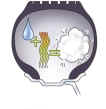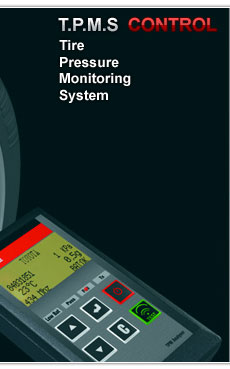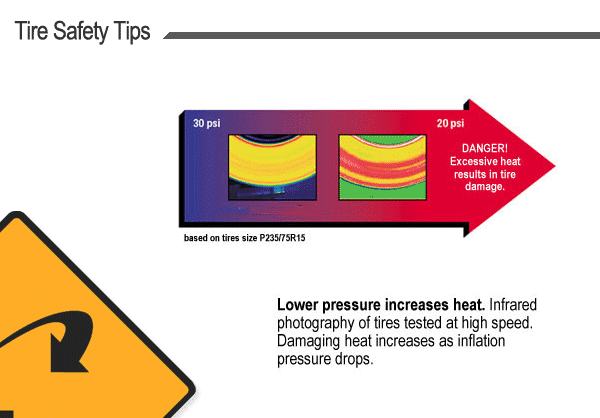|
Why buy a GWR Premier Nitrogen Tank Filling Stationtm
GWR's revolutionary tank systems can automatically delivers a consistent
99.99% concentration of Nitrogen to the tire, something no generator system can do.
Interestingly though, some manufacturers do claim they can... on their web
site. (IE: " Our generators can produce nitrogen in
excess of 99.9% purity and provide the procedures to guarantee a minimum
of 95% purity in the serviced tire, which is the minimum allowable purity
that must be maintained in the tire to enjoy the benefits that nitrogen
provides.") Well they are almost right with the 95% (it's 97%), although it is
impossible to consistently get 99.9% with a generator due to inherent
problems with membranes, filters and run time.
In comparison to our tank system, some Nitrogen "Generating" machines
fluctuate gas concentration by as much as 10% as their membrane filters
become clogged with contaminants and oils from the shop's air
supply. Worse, the net cost per tire runs from an absolute minimum of $1
to as much as $4. That's
based on fixed yearly maintenance costs, the condition of the Generator's filtration and membrane system itself and the
quality of the supporting air compressor. Remember that the longer
their system runs, the longer it takes to regenerate N2 because filter
contamination grows and flow rates decrease with every hour or usage.
We thought you might be
interested in reading an excerpt
from a manufacture of generator systems.
This one is actually honest about the limitation of membranes.
|
"Since membranes start degrading immediately, a
customer's unit will over-perform at first. If, however, we put
high-pressure air through the membrane and/or pushing high volumes
of air through the unit to increase flow, the unit will degrade much
faster.
If you think of the logic, it’s obvious: Membranes
degrade because molecular particles which get past filtration plug
the holes through which the O2, CO4, CO2 molecules ferment. The more
air and the higher the pressure (more excited molecules bouncing
around, moving, giving a better chance for impurities to plug holes)
the more quickly the membrane deteriorates. Since the membrane
is 85% of the cost of a membrane system (I.E. $3,000 to $5,000),
things go downhill pretty fast.
In general... as membrane purity goes down, customers must increase
flow of input air to ensure volume and purity. Each time more air is
added though, degradation of the membrane becomes faster and
faster." |
If this scares you and it should if
you have a limited budget, you are a candidate for the Premier Nitrogen
Filling Station! Because there is no expensive membrane to
replace down the road, the consistent final cost per tire with a Premier
Filling Station is only .25¢ to .50¢, that's less than $2 per
vehicle! Not bad when you consider the average retail ticket for four
tires is $30 to $40. Yes, a 1000% to 2000% mark-up with virtually no labor or
parts... plus our exclusive touch screen allows anyone on your
staff to perform the simple service with only 5 minutes of initial instruction.
Do the math and you will see how the GWR Nitrogen
Filling Station (tm) creates a 400% greater profit
margin with 1/4 the labor time. Our machines don't just put "nitrogen in tires", they do all four
(or 4 plus spare) at one
time, automatically! Generators, on the other hand have one hose and
take 30 to 45 minutes to do the same service. If they happen to have
added more hoses now to keep up with the Premier System (so called "new
and improved" models), they still
take 30 minutes or more on a multi pressure vehicle. In contrast, simply set the
various tire pressures on the Premier Nitrogen's Color Touch Screen,
push the start button and walk away. In about 10 to 12 minutes all four or
five tires, will have been purged and filled
twice with virtually no
labor on the technicians part. Most important, there is no waiting time to
"make more nitrogen" after two or three are filled, like some generators
systems. Can you or your customer wait an additional 10 minutes to
an hour, for the generation and storage of
more Nitrogen if a machine ran out during a service? That's asking a lot!
Note: Our systems can be configured to fill more than one
vehicle at a time, with no waiting. If you are a busy multi-bay shop this
may be a money making option for you! Remember, with our tank
distribution system, there is never a wait to "generate" more Nitrogen
before the next fill job. You can even add
multiple tanks
with our exclusive automatic tank pressure monitoring system... it allows you
to fill vehicles for
weeks or even months without touching a tank. Additionally there are new features now
available that we decided not to discuss here, to keep from competitors eyes. It's only fair they should have to research and develop
new innovations like we do, not just take them from more progressive
companies like Premier.
After all this, we still offer more...
GWR's exclusive design
reduces your initial cost when compared to big name generator
filling systems. They may have the name but they do not have the best
system, that's a
guaranteed fact! For example, what if there is a break-down of your
generator machine? Can you afford to wait days of weeks for a service
technician to come to your location? Worse, do you want to crate
the monster machine at your expense, to send it back for repairs that may take weeks or months. If you purchase GWR's
Premier Nitrogen Filling Station(tm) you won't need
to, ever! On the slight chance you ever encounter a problem with our state
of the art technology, you simply disconnect the hoses, unplug the power
cord and then remove the entire top panel from the main metal
housing/cart. The 20 lb "brain" can then be sent via the US Postal
Service, FedEx or UPS, for a quick repair at our factory. Again,
with our exclusive design, the whole repair process requires only one day
in-house, before we turn it around. Check out the warrantee of the
big names and be sure to read the fine print... most are fully warranted
for only 1 year, not the 5 years they claim. Additionally,
you must buy expensive multiple filters exclusively from them and follow a
rigorous extensive maintenance schedule, otherwise you void the entire warrantee.
Finally, they make sure they are fully protected by stating your warrantee
is void if they find one speck of oil in the membrane.... something
virtually impossible in a shop environment.
A final though about "generators"...
You may be unaware of this fact, "generators" require
the continual replacement of their expensive membranes ($3000-$5000) and
multiple inline filters. Their salespeople will tell you a membrane last
for 5 to 10 years, but they are talking absolute perfect conditions with an air
compressor/filtration system that would cost you $10,000 minimum.
Reality is, there's no way to change this "built-in" design problem, so
actual "real cost" of a generator's maintenance will probably be
$1000 to $2000 per year. We regularly get calls from shops telling us
they have replaced membranes within a year of the new purchase... at a
cost in excess of $3000. Worse, that amount does not include
the enormous cost of electricity required to run a 12CFM or higher, 2
Stage, 175PSI air compressor, or the ware and tear on it. (Note:
Standard shop compressors can run 3, to 4, to up to 8 hours per day since
their volume and or pressure is generally not sufficient to push a high
volume of air through the O2/N2 separating membrane, plus the production
ratio of O2 to Nitrogen is about 3 to 1. Additionally, shops may
have to wait for extended periods of time for a generator system to
manufacturer more nitrogen, possibly on a single vehicle.)
Amazing facts
"they" don't want you to know:
A membrane's capacity to produce nitrogen will drop 61% when you
try to increase nitrogen purity from 95% to 99% (example 8 scfm will drop
to 3.1 scfm). Additionally, membranes will lose the capacity to
produce nitrogen when the temperature drops in the shop below membrane
ambient operating temperatures, normally quoted at 68 degrees to 75
degrees. On the average, for every one degree of temperature drop
below these operating ambient temperatures, a membrane will lose .9% cubic
feet of gas production. This condition could be overcome by heating
the air feed, however this adds additional operating expenses, plus the
initial cost of new equipment. Any way you look at it... membranes
are expensive initially and for the long run!
Something new "they" came up with!
We found out something interesting while displaying
our Premier Nitrogen Filling Station at the 2006 SEMA show in Las Vegas, a
few years ago. Several of the most powerful companies
selling nitrogen generators have gotten together and formed a so call
"information organization" to tout the benefits of nitrogen to the general
public. Interestingly they have limited their founding and controlling
members to four companies, the "big" generator manufactures
(surprise, surprise).
Additionally, they are directing the information coming out to the public
so that it seemingly supports a new opinion that you only need a 93% final
concentration of nitrogen in tires. We find this disturbing yet
expected, since most generators can't fill tires with a greater than 93%
concentration. From the beginning of tire testing and discussions on
nitrogen, all scientific testing and engineers in the rubber and tire
manufacturing field have supported the 96% number as the absolute minimum.
Now, all of a sudden, non scientific based companies who only "assemble
or re-label equipment" come up with a "new" theory. One that supports their limitations! Who are we to
believe? Does it sound logical that replacing air with nitrogen in a
tire is beneficial, yet you don't need to change as much as is physically possible?
They state that at 93% N2 concentration, we achieve a balance between
outside and inside saturation levels of O2. To make their theory plausible, I
honestly believe they would need to change the
law of physics. I could be wrong, but someone would have to explain how air (oxygen) would go into a tire (through the walls) when exterior
air pressure is 15psi and interior tire pressure is 30psi or more.
That's like trying to blow air into an inflated tire, with a hose
and your mouth. Please don't fall for this one, I believe
technicians and shop owners are smarter than that.
Like to see what the godfather of rubber testing says about the minimum N2%
needed....
including the accepted scientific principles and peer reviewed scientific
papers...
click link below.
(After reading, click back button to return to this page)
Important paradigm shift in tire maintenance
practices!
ECONOMIC ADVANTAGES FOR HIGH PURITY NITROGEN INFLATION
Want to make money tomorrow? Call us today!
Please give us a call for details on how you can take
monetary advantage of the new regulations imposed on all 2007 vehicles.
If you don't want your competition to make 1000% to 3000% profit on a sale of
Nitrogen to your customer next week, you need to act now! We have
filling machines at a price level for every budget,
some with features not even $10,000 units have. Depending on your shops
size we will tailor a custom fitted machine for the most efficient use,
not an overkill for your operation. Why pay for a standard "off the
shelf" generating machine that's larger and higher in maintenance,
when a GWR system will fit you exactly? Don't throw your money out the door
year after year!
How much can you really make???
Please note we do offer discounts for cash sales, but leasing
programs are available for those that qualify and want to make small
monthly payments for 24 to 48 months. With monthly payments in the
$200 range, your cost of goods is only about 20%. For
example, after making the small monthly lease payment, a sale of just one
Nitrogen fill per day will net you $400 to $500 per month. Now multiple that by 25% or
50% of your daily car count (2 to 4 vehicles) and you begin to see the incredible profit
potential of this service. Imagine what you'd pocket with sales of
5, 10 or more jobs per day, it's like having a money tree in the back of the shop!
|
If you want a shock, review below the profit generating potential
of the GWR Premier Nitrogen Tire Filling Station. Remember
that this is for a shop with only a car count of
10 vehicles per day.
As a footnote... the national average for this size shop is 3 to 4
Nitrogen sales per day.
Fact... You will pay for this machine in 1 to 3 months, with pure
profit in your pocket thereafter.
|
Daily
Fills |
% of Car Count* |
Service
Price |
Total
N2Cost |
Total
Labor Cost |
Daily
Net Profit |
Monthly
Net Profit |
1 |
10% |
$24.95 |
$2.00 |
$3.00 |
$20.00 |
$500.00 |
| 2 |
20% |
$24.95 |
$4.00 |
$6.00 |
$40.00 |
$1000.00 |
| 3 |
30% |
$24.95 |
$6.00 |
$9.00 |
$60.00 |
$1500.00 |
| 4 |
40% |
$24.95 |
$8.00 |
$12.00 |
$80.00 |
$2000.00 |
| 5 |
50% |
$24.95 |
$10.00 |
$15.00 |
$100.00 |
$2500.00 |
| 6 |
60% |
$24.95 |
$12.00 |
$18.00 |
$120.00 |
$3000.00 |
| 7 |
70% |
$24.95 |
$14.00 |
$21.00 |
$140.00 |
$3500.00 |
| 8 |
80% |
$24.95 |
$16.00 |
$24.00 |
$160.00 |
$4000.00 |
| 9 |
90% |
$24.95 |
$18.00 |
$27.00 |
$180.00 |
$4500.00 |
| 10 |
100% |
$24.95 |
$20.00 |
$30.00 |
$200.00 |
$5000.00 |
| |
|
|
|
|
|
|
| This is the most
profitable service in a shop, don't miss out on this opportunity! |
Direct line to our Sales and Technical Department
1(800) 266-4497
(We are open 2PM to 8PM EST, Monday through
Friday)
|



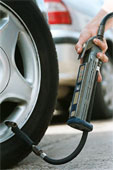

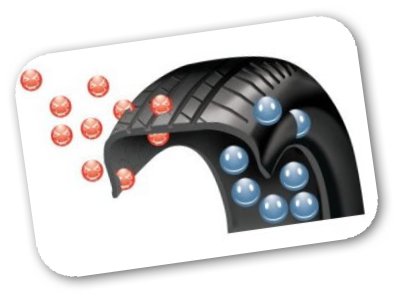
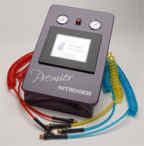
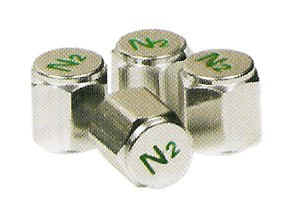


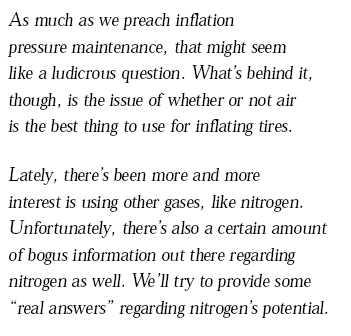
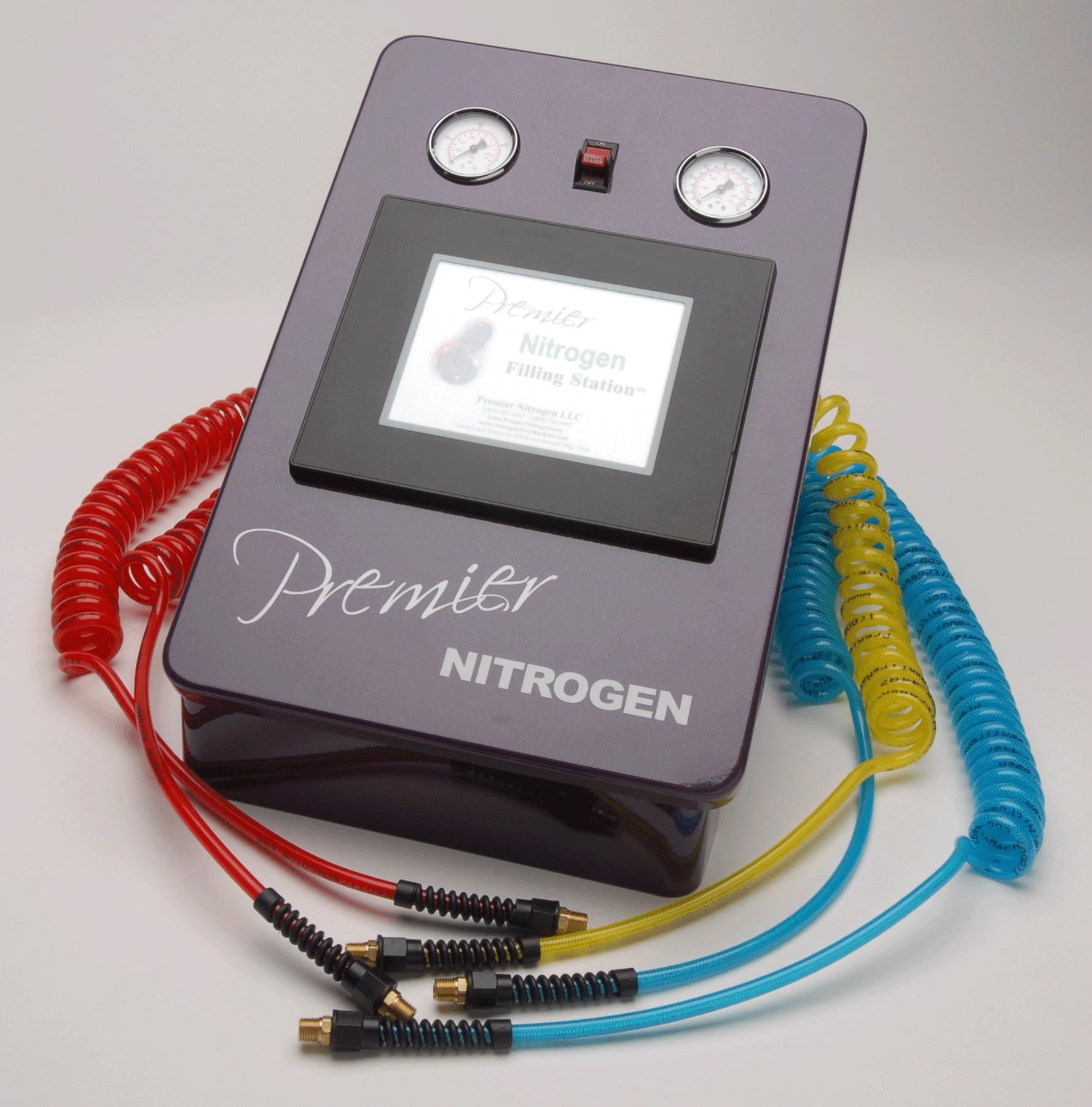




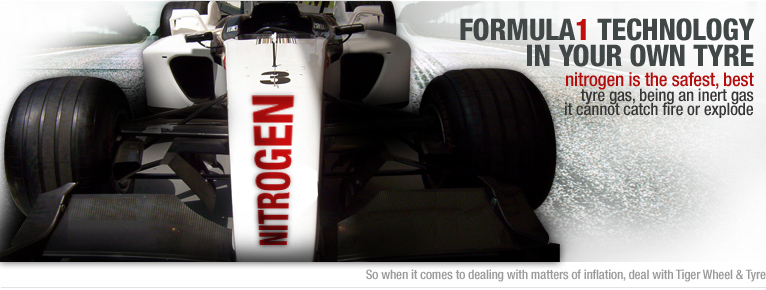
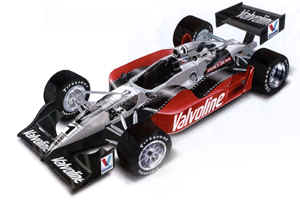
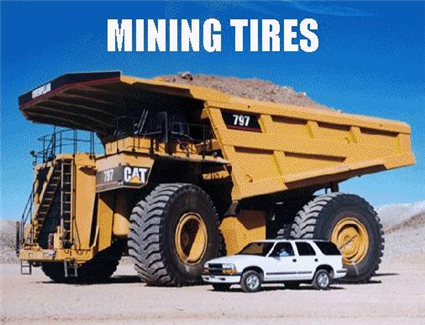
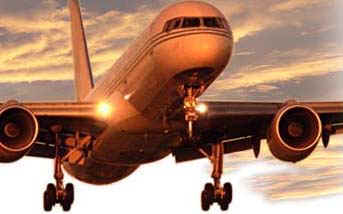

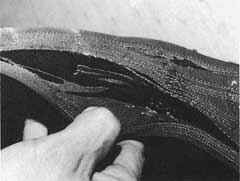
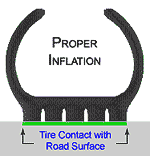
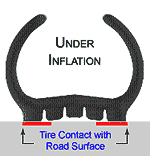

 Air is about 1/5 Oxygen, and oxygen, especially at high pressures and temperatures, is a very reactive element.
When oxygen reacts with things, the process is called oxidation. When oxidation is extremely rapid, it's called "burning.
That's one reason nitrogen is used in off-highway and aircraft tires. These tires run so hot they can actually catch on fire.
Nitrogen doesn't support combustion, so nitrogen-filled tires don't add fuel to the flames. And nitrogen helps prevent slower forms of oxidation also.
Air is about 1/5 Oxygen, and oxygen, especially at high pressures and temperatures, is a very reactive element.
When oxygen reacts with things, the process is called oxidation. When oxidation is extremely rapid, it's called "burning.
That's one reason nitrogen is used in off-highway and aircraft tires. These tires run so hot they can actually catch on fire.
Nitrogen doesn't support combustion, so nitrogen-filled tires don't add fuel to the flames. And nitrogen helps prevent slower forms of oxidation also.

 While both nitrogen and oxygen can permeate rubber, nitrogen does it much more slowly.
These pressure losses in a tire can average up to 2 psi a month as a result
of the air passing through the sidewalls. On the other hand it might take 6 months to lose 2 psi
with nitrogen. And nitrogen is far less reactive. It doesn't cause rust or corrosion on steel or aluminum, and it doesn't degrade rubber. Wheel surfaces stay smooth and clean, rubber remains supple and resilient.
While both nitrogen and oxygen can permeate rubber, nitrogen does it much more slowly.
These pressure losses in a tire can average up to 2 psi a month as a result
of the air passing through the sidewalls. On the other hand it might take 6 months to lose 2 psi
with nitrogen. And nitrogen is far less reactive. It doesn't cause rust or corrosion on steel or aluminum, and it doesn't degrade rubber. Wheel surfaces stay smooth and clean, rubber remains supple and resilient.
 air concentrates the water in it. Draining the water from your compressor tank daily helps, but unless you have a really efficient air dryer system, chances are that there's a lot of water in your compressed air.
air concentrates the water in it. Draining the water from your compressor tank daily helps, but unless you have a really efficient air dryer system, chances are that there's a lot of water in your compressed air.
